Cartoons
Another of my interests involves cartooning. This artform has allowed me to communicate biological ideas, while being entertaining and having fun. Some of these cartoons have appeared in the Journal of Experimental Biology in the Inside JEB section and on the Canadian television program @Discovery.ca.
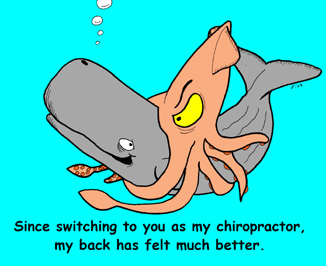
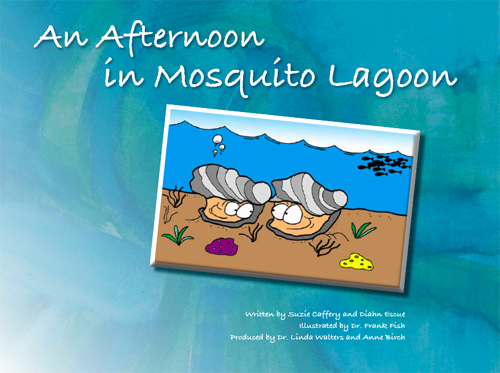
One work was a series of cartoons to promote conservation of oyster reefs in Florida,
which was commissioned by the Nature Conservancy.
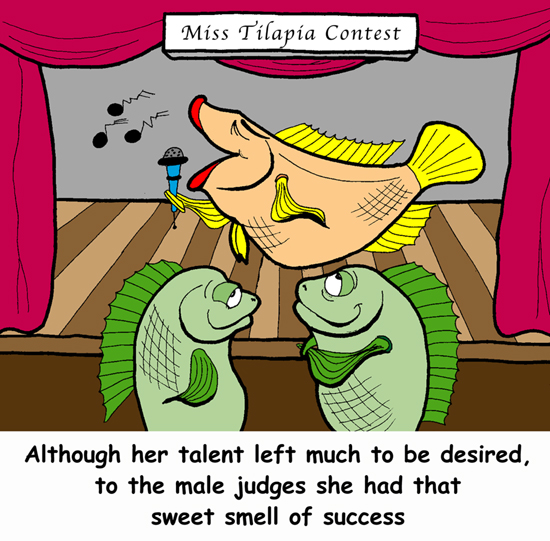
As it turns out, female tilapia produces pheromones that the male fish can detect.
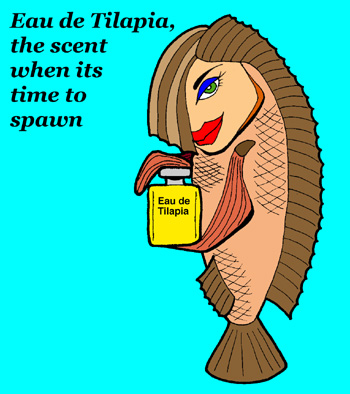
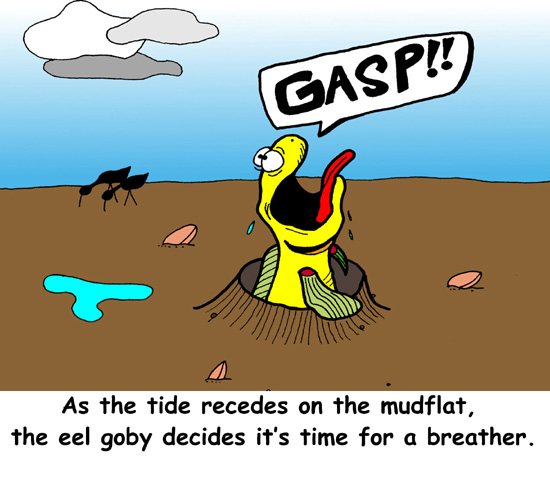
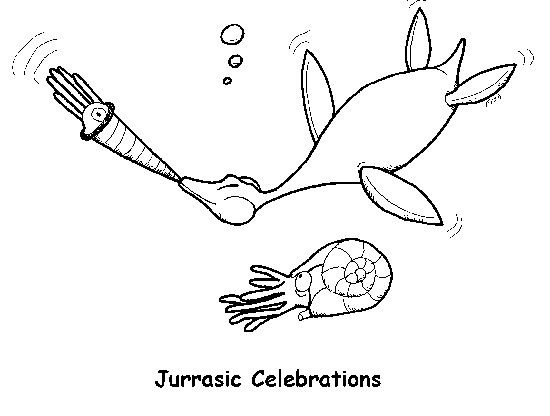
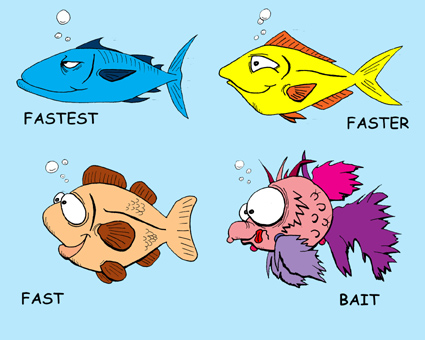
This cartoon, which was published in the Journal of Experimental Biology, was in honor
of Dr. Paul Webb of the University of Michigan, who greatly influenced my research.
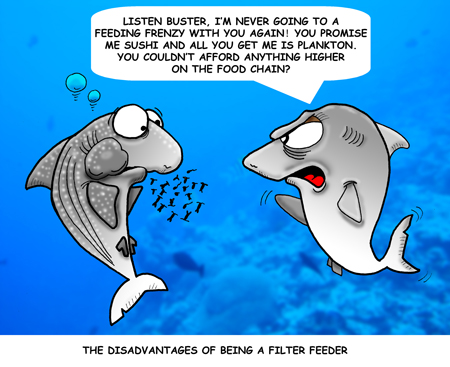
When the editor for the Journal of Experimental Biology asked me to do a cartoon on filter feeding sharks, it turns out that I had a cartoon on the subject ready to go. I added in a background of a coral reef from the work that I had performed on the island of Yap, while researching manta ray swimming.
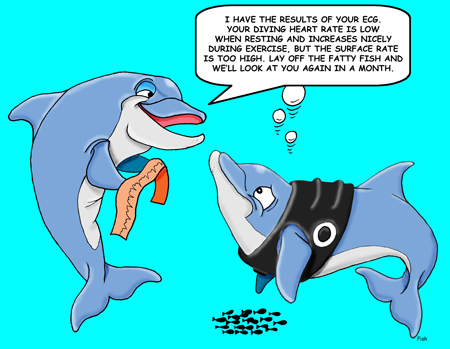
If you have ever had a cardiac stress test, you can sympathize with the dolphin here.
The dolphin was equipped with a special vest from O'Neal wetsuits with a heart rate
monitor built in. The cartoon was from work that came out Terrie Williams' lab at
the Long Marine Laboratory of the the University of California Santa Cruz. The study
was published in the Journal of Experimental Biology.
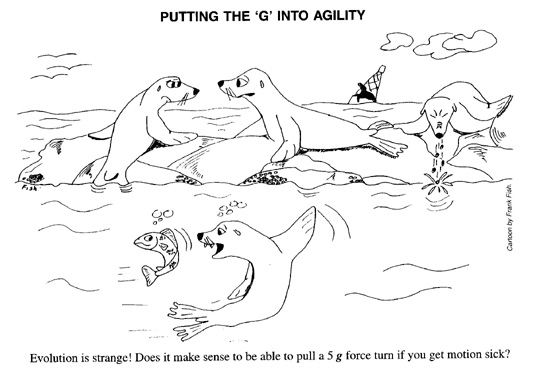
This cartoon was my first officially published cartoon, which appeared in the 2003 Journal of Experimental Biology 206(3) issue. It was based on my research on the maneuverability of sea lions. Compared to other marine mammals, sea lions have a morphology that can promote greater instability and thus greater turning performance.
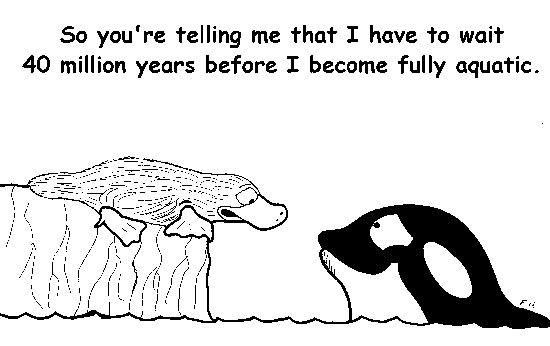
Most of my career has been devoted to understanding the evolution of aquatic adaptations in mammals. How do aquatic mammals go from a four-legged terrestrial animal that fell into the water to the highly efficient and beautifully streamlined dolphin? I have examined the swimming abilities of both the platypus and the killer whale.
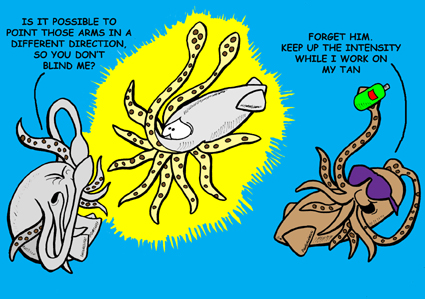
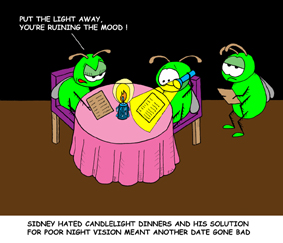
This cartoon was about night vision in some insects. It was rejected by the Journal of Experimental Biology, but it had a sentimental inspiration for me. My father hated restaurants with poor lighting. A candlelit table was unbearable. One time he pulled out a flashlight to read the menu. That was the last time we ate at that establishment.



Inspired by work on manta ray swimming. The lighting effect on the manta's back was done by Anton van Heldon, who worked on marine mammals for the Museum of New Zealand (Te Papa Tongarewa).
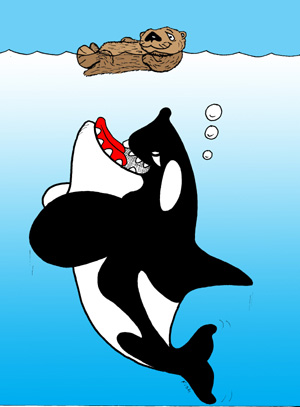
The idea for this cartoon came from reports that orcas were feeding on sea otters in Alaska as their normal prey species had dwindled in population.
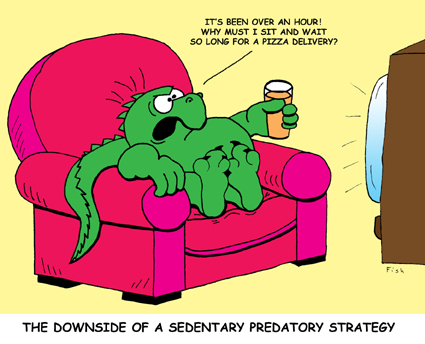
You can sit and wait for your food or run it down. When ordering a pizza, the sit and wait strategy may be best. Have you ever tried to run down a Domino's Pizza delivery guy?
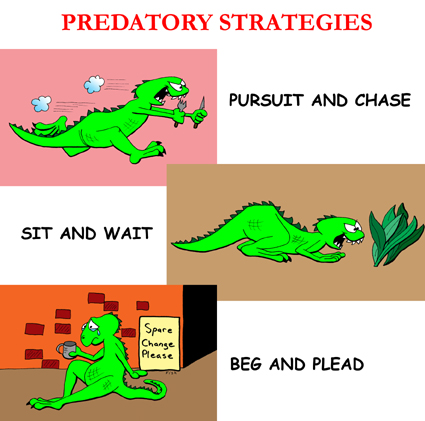

The 2009 holiday cartoon. It was a rough year even for Santa.
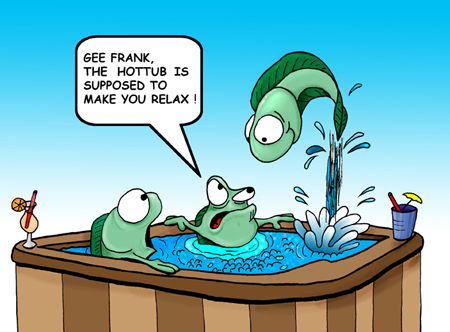
It seems that tadpoles get very active when you put them in warm water.
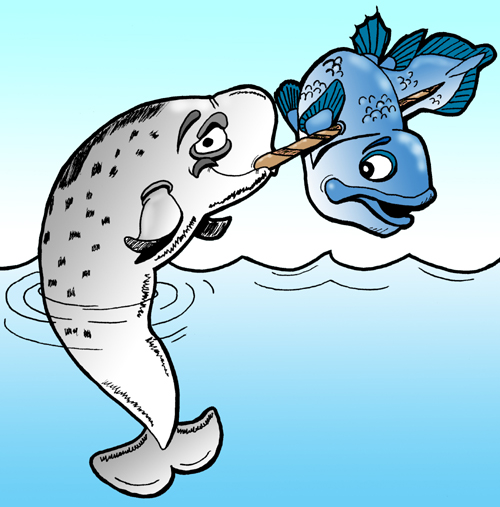
For the 2010 Anatomy and Function of Marine Vertebrates class T-shirt, the class wanted a narwhal impaling a coelacanth.
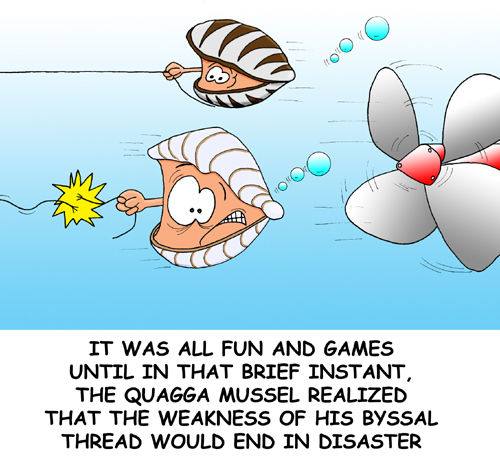
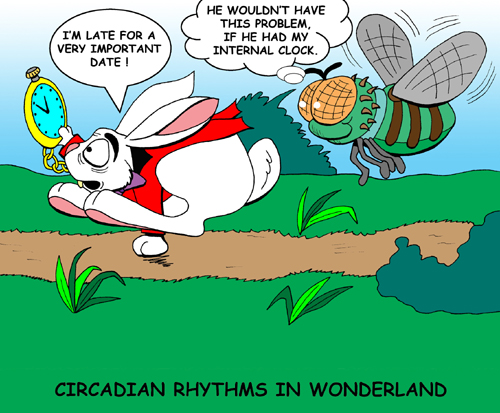

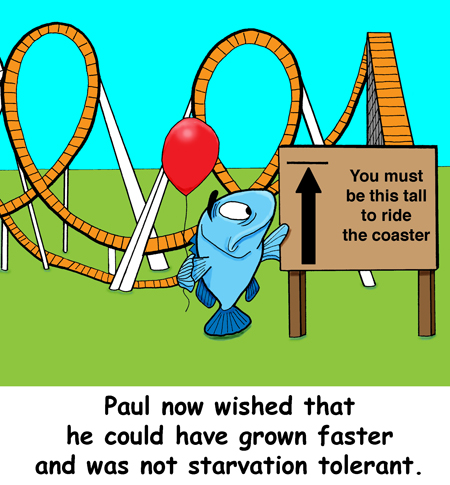
This was an article for the Journal of Experimental Biology on fish that were starvation tolerant. Starvation limited the growth of the fish. The name, Paul, was chosen in honor of Dr. Paul Webb of the University of Michigan, who is the leader in fish swimming mechanics.

Craneflies are resistant to getting wet. What better place to illustrate where not getting wet would be an advantage

Another cartoon for the Journal of Experimental Biology on how pigeons use a mental map to know where they are going. The map is from the home lab of the authors of the article. See if you can figure out the city. Here is a hint....it is someplace in central Europe.
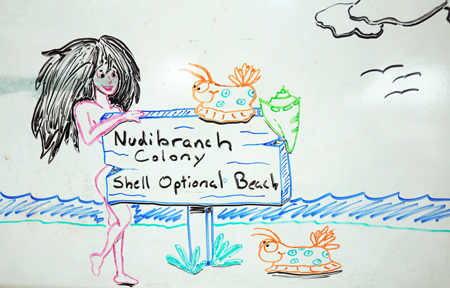
The nudibranch is a shell-less marine snail. Why can't they have a nude beach?
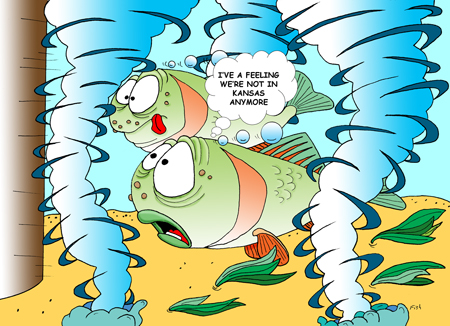
It is a turbulent world that we live in. This goes for fish as is shown in this cartoon
for the Journal of Experimental Biology. Typically research on fish swimming has been
confined to examining their propulsive motions in still-water aquariums or flow tanks.
The the reality is that in nature fish have to contend with changing currents, waves,
tides, vortices, eddies, and turbulence. The flow in the wake of a pole in a stream
is not smooth and regular, but has large cyclonic vortices that are shed alternately
for each side of the pole in what is termed the Von Karman Vortex Street. If swimming
in the appropriate location in the vortex street, fish can use the vortices as an
external energy source to reduce the energetic cost of swimming.

I have expanded into caricatures. The above caricature is of my long-time friend Bob
Full, who is at the University of California Berkeley and is the leading expert on
locomotion in insects and other creepy-crawlies and their application to robotic systems.

Even earthworms can be exciting to study. In my General Zoology lab, students perform
experiments on earthworms. One experiment is to examine the change in heartbeat with
temperture. Students count the number of pulsations of the dorsal vessel of an earthworm
after exposure to different temperature water baths. The actual heart of the worm
is the dorsal blood vessel. The experiment works well so long as the student does
not expose the worm to temperatures above 22 C (You have to eat what you cook). This
experiment was originally developed by Dr. Richard Hill, who was major professor for
my Master's at Michigan State University. The second experiment examines the strength
of an earthworm by measuring the force that it produces while burrowing in soil or
sand. Sometimes the worm is too strong and rips itself in half. Let's see a human
bodybuilder do that trick.
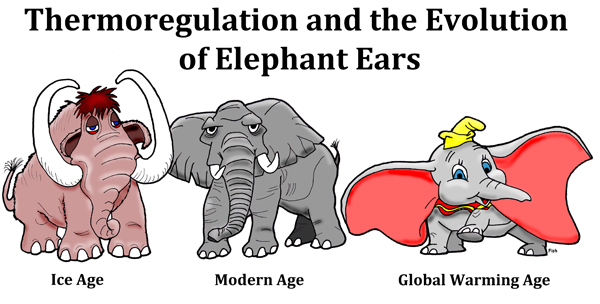
So what is going to happen to elephants due to Climate Change and Global Warming?
Prehistoric elephants had small furry ears during the Ice Age and the modern African
elephant has larger ears. If we extrapolate to a future with warmer temperatures,
elephants could evolve even larger ears. Just watch out if they use the enlarged pinnae
as wings to fly (Birdy, Birdy in the sky, why did you do that in my eye, Gee I'm glad
elephants don't fly!).

